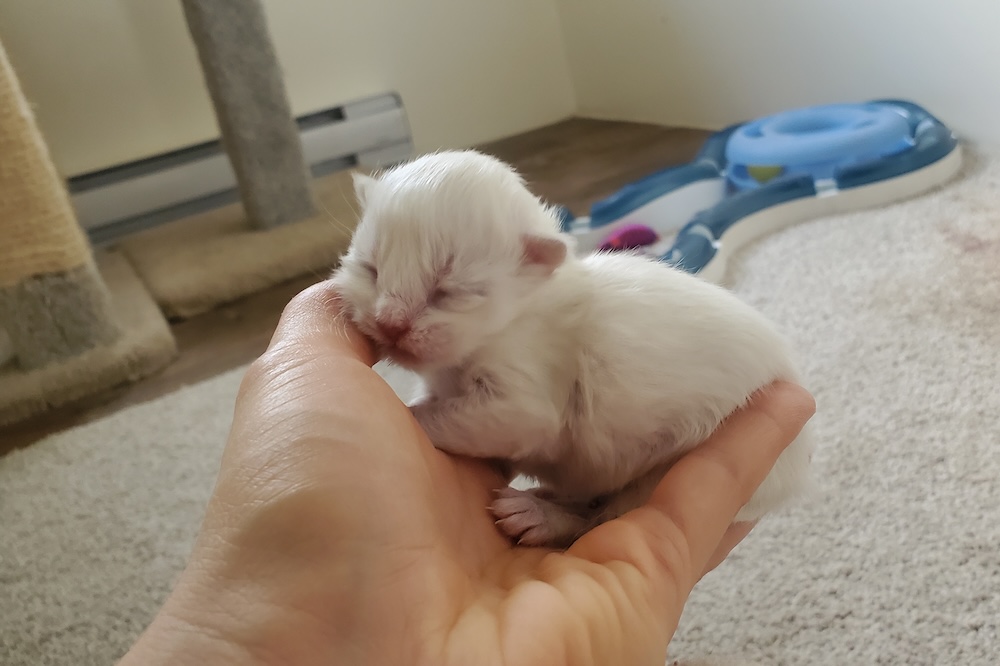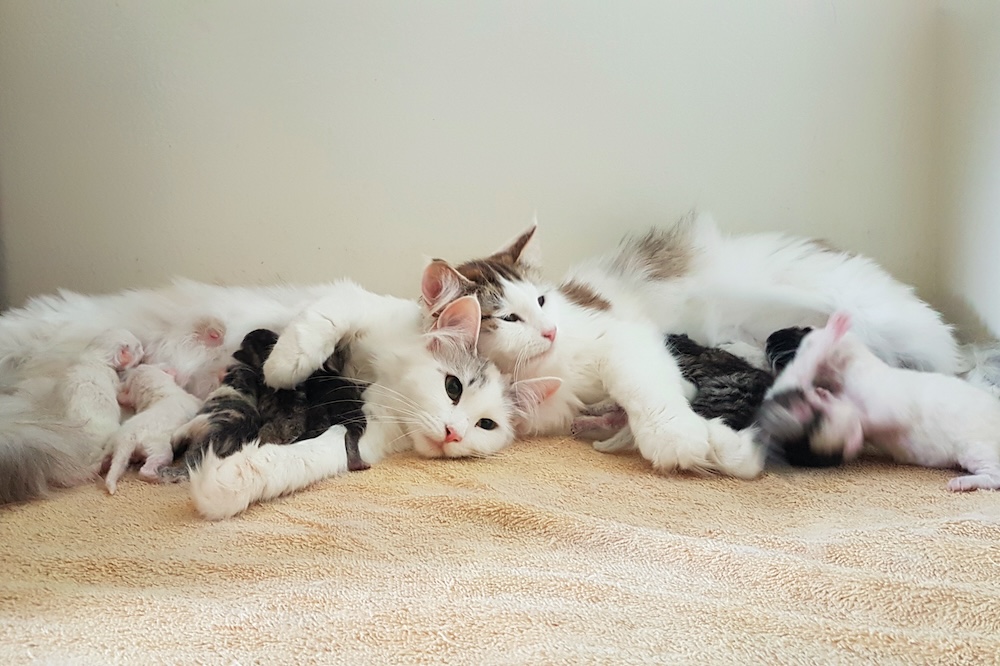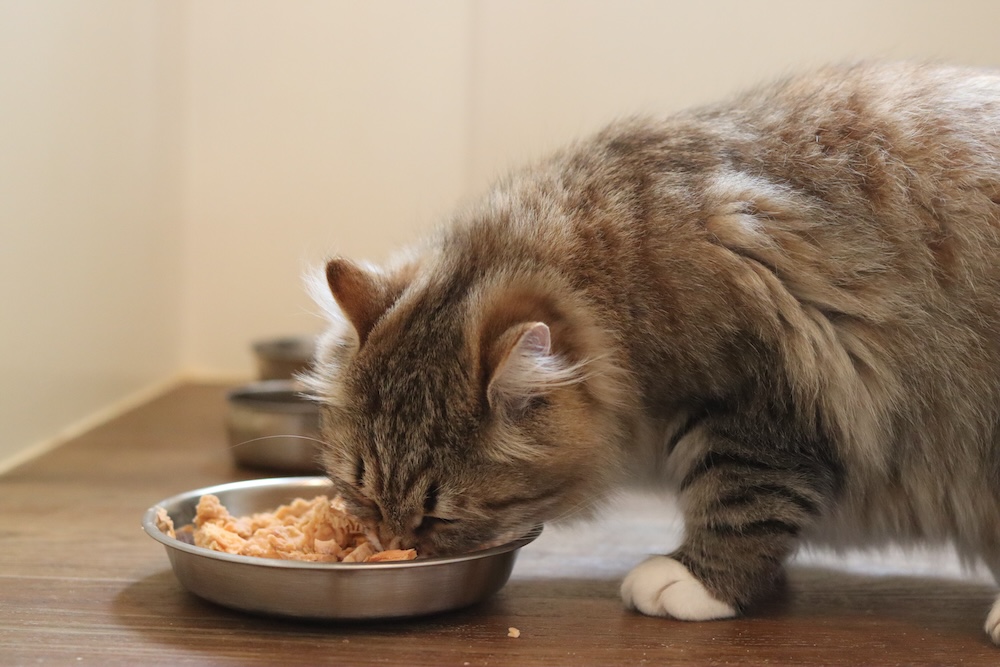About Us
Siberians are a natural cat breed whose luxurious winter coats and wild appearance make them look right at home in the Pacific Northwest. Known as a hypoallergenic breed, Siberians are less likely to trigger cat allergies in humans, which has helped some of our own family members and those adopting our kittens to enjoy having a cat in their lives. The social personality of Siberians makes them an excellent choice as a family cat, given their friendly, playful, and often chatty nature.
In our breeding practice, we consider having a small number of litters crucial for ensuring the best care for each individual kitten. We have only four queens and one boy, with two females usually giving birth at around the same time. There are about 4-5 kittens in each litter, allowing us plenty of time to ensure proper care and socialization. Below, we outline some additional strategies we implement to ensure all our kittens are friendly and healthy by the time they go to their homes.
Socialization
We believe that kittens benefit immensely from socialization when it begins early, allowing kittens to get used to the touch and smell of human hands before they can see or hear. Because of our close relationship with our female cats, mothers allow us to handle kittens right after they are born, permitting us to gently accustom kittens to being cuddled. As kittens grow, their relationship with people is shaped by their mothers’ behavior towards us, as they follow their lead to come to humans for petting. Spending a significant amount of time with the kittens as they grow also allows us to gain better insights into their personalities and energy levels to assist adoptive families in selecting a kitten that is the best fit for their family.
Co-Parenting
Maintaining the well-being of our kittens and breeding cats is a top priority, which has led us to implement a sister co-parenting program in our cattery. While we offer care to our female cats throughout their pregnancy and kitten rearing, when their litters coincided, mothers who were emotionally close would assist each other in taking care of the litters. We noticed this led to a reduction in the stress of mothering, as the females took turns in nursing and cleaning kittens, allowing each other to get more rest. Consequently, we have decided to have two pairs of sisters whose cycles often coincide, resulting in a greater frequency of joint litters, which we believe benefits our cats and kittens.
Nutrition
Nutrition begins with mother’s milk, but as kittens grow, having a healthy, varied diet is vital for them to grow into adult cats. At Snowy Kitten, we feed our adult cats and kittens a combination of raw food, wet canned food, and high-quality kibble. Pacific salmon and raw cold-treated beef mimic the natural diet of this forest cat breed, as well as ensuring lactating females and growing kittens have easily accessible nutrients. Additional variety to our cats’ diet is provided by meals of Royal Canin and Wellness canned food, as well as Royal Canin dry food that is always available. By the time they leave for their new home, kittens are well-adjusted to a diverse range of foods, making for an easy transition to the dietary plan that works best for your family.
Litter-training
All of our kittens are properly litter-trained by the time they depart for their new home, which is a task their mothers undertake during the time they are 3-4 weeks old. We use manual litter boxes for small kittens, using only plant-based Naturally Fresh Walnut Shell Quick Clumping Cat Litter for their safety. We have recently begun using a Litter Robot 4 in our cattery with the same litter, which kittens will be introduced to once they reach 12 weeks. Their experiences with different litter box varieties should allow a seamless transition to manual or automatic litter box usage in their new home. However, we recommend starting with Naturally Fresh until the kittens are adjusted before introducing a new litter variety.
Entertainment
Our kittens are provided with an enriching environment while growing up, including a variety of toys that stimulate their playing/hunting instincts. Frequent playtimes are essential for intellectual stimulation and proper muscle development, ensuring our kittens are happy and healthy. For our adult cats, having year-round access to enclosed catios allows them to safely enjoy the outdoors. These outdoor enclosures offer cats the option to soak up the sunshine and provide excellent bird/bug watching opportunities. Kittens are also encouraged to explore the catios once they reach the age of around 5-7 weeks, with the exact age depending on the season.




